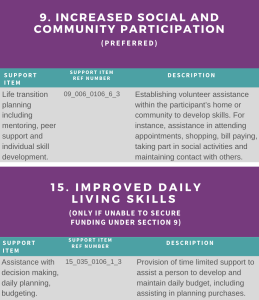Introduction
The National Disability Insurance Scheme (NDIS) is an Australian government initiative designed to provide support and services to people with disabilities. The NDIS was established to help people with disabilities achieve their goals and live their lives to the fullest. One of the key features of the NDIS is the three categories that help determine the level of support a person requires. In this article, we will explore these three categories in more detail.

Category 1: Core Supports
Core supports are the most basic level of support provided by the NDIS. This category includes support for daily living activities such as personal care, household tasks, and mobility. Core supports also cover assistance with accessing community services and resources, and aids and equipment necessary to assist with daily living.
Core supports are designed to help people with disabilities maintain their independence and stay connected to their community. This category provides funding for a range of services, including:
- Assistance with personal care such as showering, dressing and grooming
- Help with household tasks like cleaning, cooking and laundry
- Support for mobility including wheelchairs, walkers and other equipment
- Aids and equipment such as hearing aids and communication devices
Category 2: Capacity Building Supports
Capacity building supports are designed to help people with disabilities develop the skills and abilities necessary to achieve their goals. This category includes support for education, employment, social skills, and community participation.
Capacity building supports are tailored to the individual needs of the person with a disability. This category provides funding for a range of services, including:
- Support for education and training including school and university fees, tutoring and other learning support
- Employment support including vocational training, job coaching and assistance with job search
- Social skills support such as communication and social interaction skills training
- Community participation support such as recreational activities and access to community resources
Category 3: Capital Supports
Capital supports are designed to provide funding for larger, one-time expenses that are necessary to support a person with a disability. This category includes funding for home modifications, assistive technology, and vehicle modifications.
Capital supports are often used to improve a person’s quality of life by providing greater independence and access to their community. This category provides funding for a range of services, including:
- Home modifications such as wheelchair ramps, accessible bathrooms and doorways
- Assistive technology such as communication devices, hearing aids, and mobility aids
- Vehicle modifications such as wheelchair lifts and ramps
Conclusion
The NDIS is an important initiative that is changing the lives of people with disabilities. The three categories of support provided by the NDIS are designed to help people with disabilities achieve their goals and live their lives to the fullest. Core supports provide the basic level of support necessary for daily living activities, while capacity building supports provide the skills and abilities necessary to achieve long-term goals. Capital supports provide funding for one-time expenses that can greatly improve a person’s quality of life. By understanding these three categories of support, people with disabilities and their families can better navigate the NDIS and access the services they need. Click here for more information.


